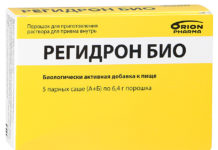Useful properties and contraindications of camelina oil have been known since time immemorial. In the recent past, there was a tradition of cultivating oilseeds with bright orange seeds in European countries. Mostly squeezed was used in the kitchen for cooking cold and hot dishes. With the advent of cheap sunflower, camelina oil has moved from the category of everyday to delicious. However, it is still in demand, due to its unique properties.
Material Content:
What is camelina oil made of?
A useful product is made from the seeds of saffron mushroom. This oilseed family of the cabbage family is more likely known as a weed. It is found in most of the territory of our country and spreads through lowlands, meadows and fields. A camelina grows along the roads and appears in landfills.
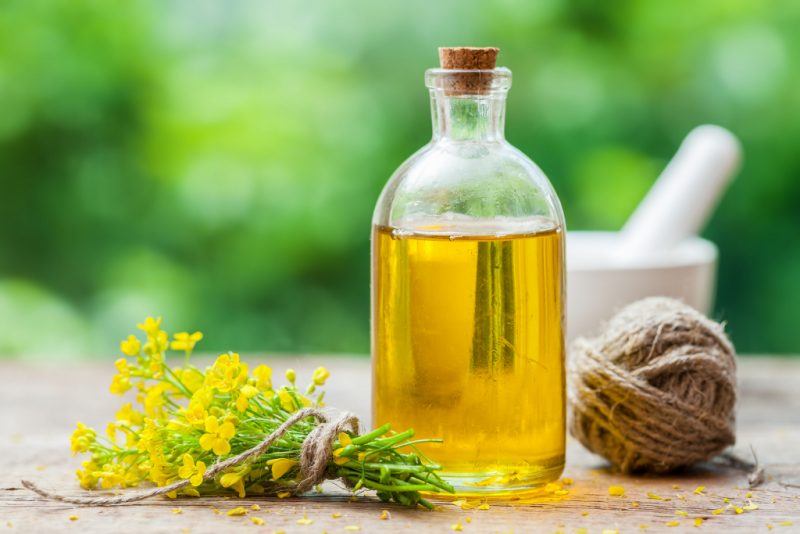
In appearance, the plant is unremarkable - upright, with thin leaves and small flowers forming long inflorescences. At the end of the flowering period, it gives pods in which small (1-2 mm) oblong orange-brown seeds ripen. For the color of the fruit, the plant got its name.
Camelina oil is produced in two ways: cold and hot pressed. During the initial pressing of the seeds, no more than 20% of the useful product is released, but all the valuable extractive substances pass into the oil. It acquires a rich yellow color, a characteristic smell and an island-like taste reminiscent of mustard.
The remaining raw materials are heated until the shells soften and the hard-to-recover fractions are released. The seeds are pressed again and 5-8% more oil is obtained.
During hot pressing, many useful substances are destroyed and oxidation products are formed. Therefore, the oil obtained by this method is forced to undergo refining (purification from harmful impurities).
Refined marc is different in color. A greenish tint appears in it, it loses its original taste and aroma. The oil becomes almost neutral. Refined product is not used for the purpose of healing, but can only be used for frying and preparing cold dishes.
Useful properties for the body
The main benefits of unrefined camelina cold pressed oil are the high content of essential fatty acids from the omega-3 family (39%) and omega-6 (18%). And the uniqueness of the product is that these components are contained in the proportion necessary for the human body.

PUFAs (polyunsaturated fatty acids) are part of the cell membrane and regulate cholesterol metabolism. Their influence extends to many systems and individual organs of our body.
The ratio of substances is more important than their quantitative content. When skewed towards Omega-6, substances that cause inflammation are formed in the body. Therefore, maintaining a balance between omega acids is more important than striving to make up for their deficiency.
For the heart and blood vessels
Substances of camelina oil increase the elasticity of blood vessels. A beneficial effect on the circulatory system is expressed in the cleansing of the walls of veins and arteries from accumulated cholesterol plaques.
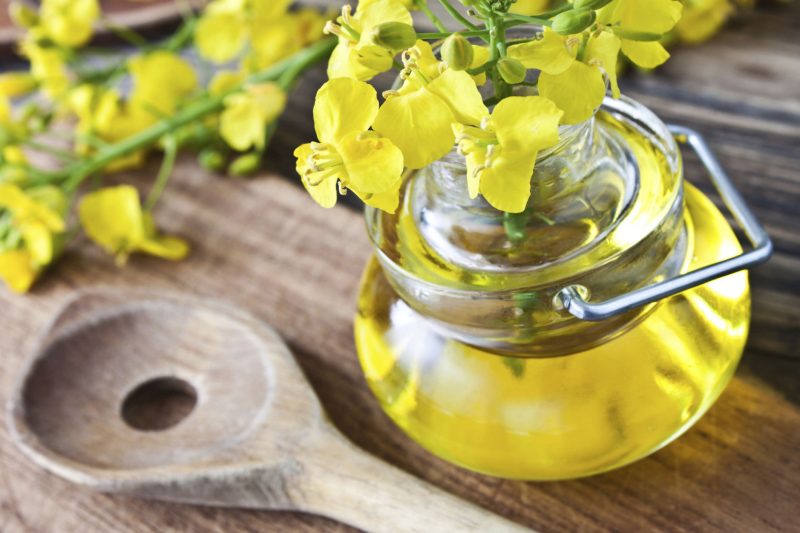
When using the product:
- heart activity improves;
- blood flow normalizes;
- pressure drops.
In addition, camelina oil is an excellent tool for the prevention of atherosclerosis and coronary artery disease.
For the stomach
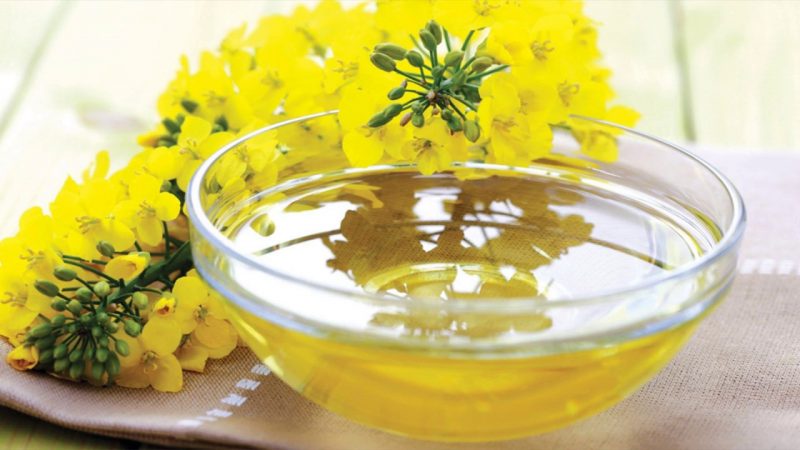
The saffron oil contains a complex of vitamins E, D, K, and carotenes, which together:
- support the mucous membranes in a normal state;
- contribute to the removal of inflammation;
- accelerate the healing of damaged tissue surfaces.
And the described product has an enveloping effect and relieves irritation.
For the reproductive system
The normal functioning of the reproductive system is ensured by the intake of a sufficient amount of fatty acids.

Sterols produced by the body are the precursors of sex hormones, and omega acids prevent them from sticking together. In addition, camelina oil promotes the transition of cholesterol into an easily accessible form, and small aggregates of fats are used to synthesize hormones and regulate sexual function.
For liver problems

A whole combination of beneficial substances affects the liver. Chlorophyll, phytosterols, vitamins and phospholipids are involved in carbohydrate metabolism. Ginger oil cleanses the liver, regulates its work, and helps restore cells.
Brain and vision support
Omega-3, 6, and 9, abundant in camelina oil, are involved in higher nervous regulation and the formation of brain cells. The use of these acids has a positive effect on cognitive abilities, reaction speed, and is also reflected in mental activity.

Omega acids increase concentration and ingenuity, affect the development of intelligence. The lack of PUFAs affects perseverance and learning. A special need for omega acids is experienced by unbalanced individuals who are prone to depression.
Carotenes contained in camelina oil are converted into retinol in the body. Vitamin A condones the formation of night vision and supports the ability to capture light in the daytime. It is necessary to moisturize the mucous membrane of the eye, and also prevents the cornea from drying out.
The use of camelina oil in cosmetology

The abundance of vitamin E in combination with carotenes turns camelina oil into an elixir of youth and beauty.
Skin Benefits
The oil complex is a natural blocker of free radicals and prevents the development of premature aging.

- camelina oil heals small cracks;
- used against dryness;
- It is used to restore skin after frostbite and burns;
- treats diaper rash.
They can even treat the skin of babies!
Oil penetrates deep into the underlying layers of the epidermis, and therefore:
- nourishes and restores skin well;
- saturates with nutrients and promotes hydration;
- balances the water-lipid balance;
- used as a massage agent for the treatment of cellulite.
The use of camelina oil for cosmetic purposes improves skin health. It eliminates small rashes, relieves inflammation, and has an antiseptic effect.
The oil forms a protective film on the face and helps to retain moisture inside. It is used as a protective agent against negative environmental factors and is part of creams for protection against ultraviolet radiation.
For hair
Ginger oil is applied to the hair roots as an independent tool. It can be included in a complex of other cosmetic and therapeutic oils to enhance the properties of all components.
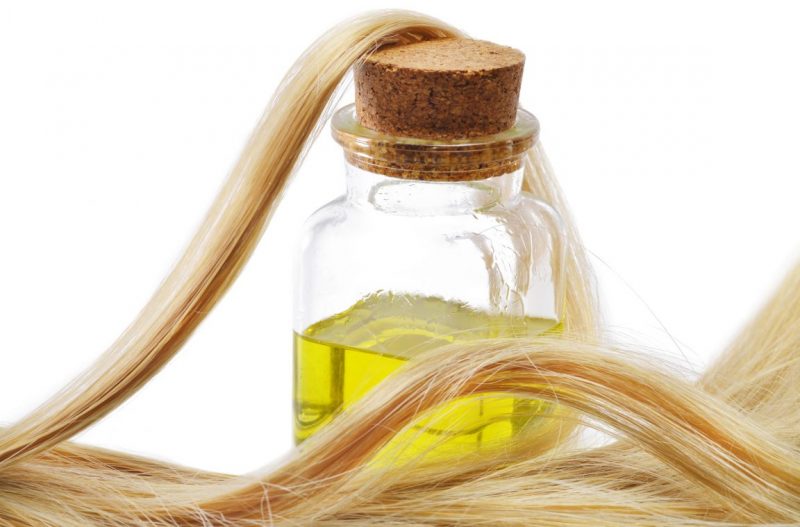
Oil nourishes and strengthens the roots. Promotes hair growth. Enhances natural shine and radiance. Increases firmness, elasticity, restores the damaged structure of the rod.
Due to its low viscosity, the product is easily washed off and does not cause a feeling of heaviness at the roots. For its properties, camelina hair oil is highly appreciated by admirers of folk healing methods.
How to take camelina oil?
As a prophylactic agent, unrefined camelina oil is taken orally. The daily requirement is covered by only one tablespoon of the product.
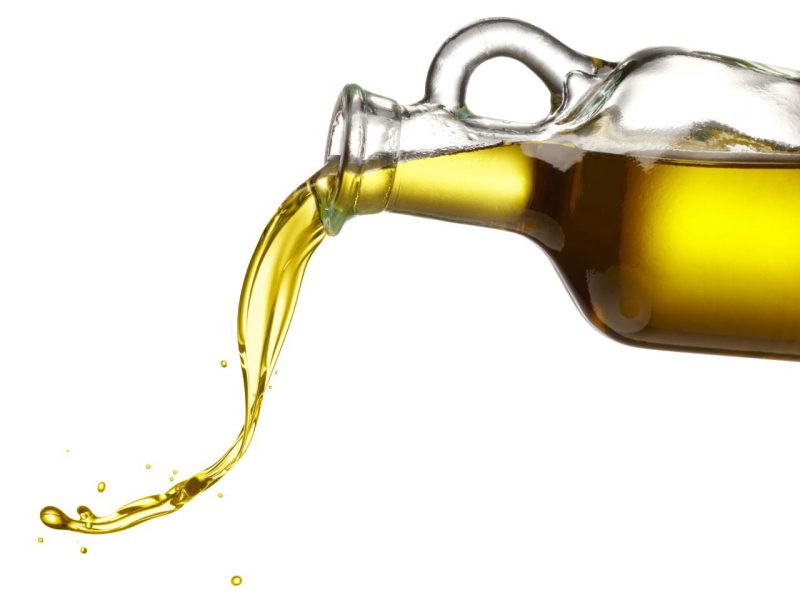
Oil is drunk in the morning on an empty stomach in the amount of the entire daily allowance. Drinking it is not recommended. The beneficial effect in the form of improving all body functions, enhancing immunity, cleansing the skin and improving hair quality can be felt after 1-1.5 months of constant use. The general course of recovery lasts 2-3 months.
Unrefined product can be added to salads and other dishes that are not cooked.
Losing weight should be a little careful. Ginger oil is high in calories (890 Kcal), and therefore those who keep a diet, it is better not to use it as an independent means. In this case, it can be used to partially replace olive or sunflower oil.
Contraindications and possible harm
Camelina oil is almost safe. When used in recommended amounts, it is impossible to harm the body. Oil can only be contraindicated for people with special sensitivity to its individual components.
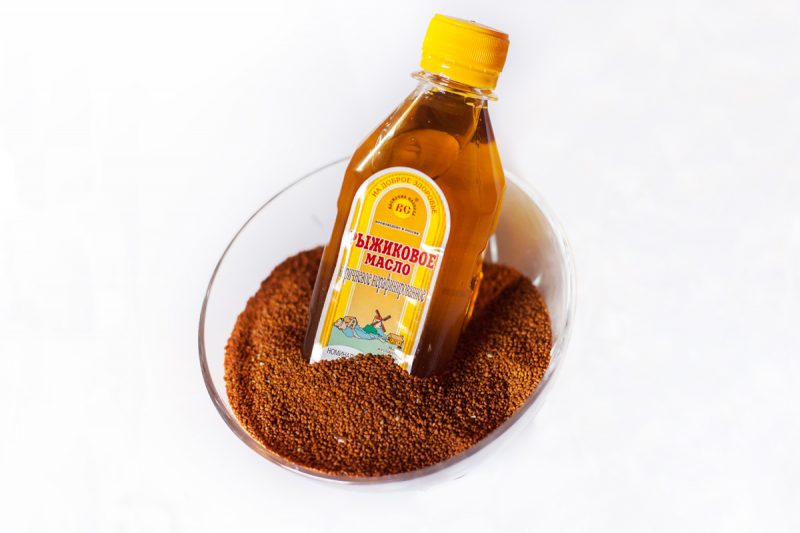
Children can use the product in a reduced dosage. Losing weight should not add camelina oil to the total amount of fat consumed. There is a recommendation for them - to replace one of the similar types of products with camelina oil.
How much valuable lurks in everyday foods. By sending these gifts, nature takes care of each of us and in our power to take from it the most useful and skillfully manage it for the good of health.







